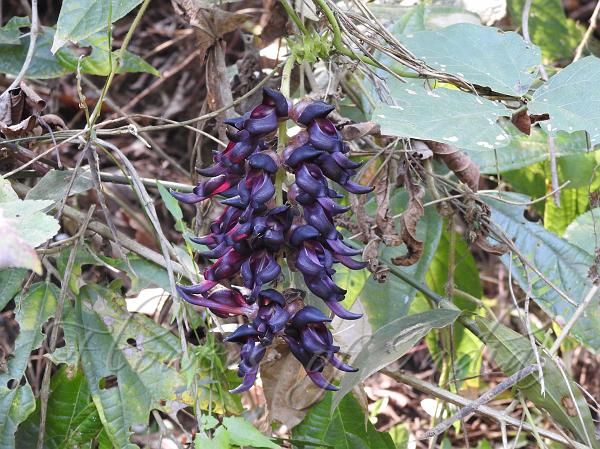|
| East-Himalayan Mucuna |
|

|

| File size | 971753 |
| Original date | 1/29/21 10:15 PM |
| Resolution | 4608 x 3456 |
| Flash | Flash did not fire, auto |
| Focal length | 17.0mm |
| Exposure time | 1/60s |
| Aperture | 4.0 |
| Focus Distance | |
| Metering Mode | Multi-segment |
| Camera make | NIKON |
| Camera model | COOLPIX P900 |
| Sensor type |
|
|
|
|
Photo: |
Botanical name: Mucuna bracteata Family: Fabaceae (Pea family)
Synonyms: Mucuna exserta, Mucuna venulosa, Mucuna brevipes
Synonyms: Mucuna exserta, Mucuna venulosa, Mucuna brevipes
East-Himalayan Mucuna is a climbing shrub with young
parts grey velvet-hairy. Leaves are alternate, trifoliolate, up to 25
cm long; leaflets 6.5-15 x 5-12 cm, laterals obliquely ovate or
triangular, last one ovate-rhomboid, pointed or nearly so, base
rounded, flat, hairless or becoming hairless above, adpressed
velvet-hairy beneath. Flowers are borne in racemes up to 16 cm long;
flowers blackish purple, 3.5-4.5 cm long; bracts ovate extending to the
flower-cluster-stalk. Calyx-tube is bell-shaped; two upper teeth quite
fused; lowest longer than the middle ones. Petals are much protruding;
standard not more than half as long as the rostrate keel, which usually
a little exceeds the wings. Pods are 8-10 x 1.5-2.5 cm, grayish-brown,
woolly, hairs itching; seeds 4 or 5. East-Himalayan Mucuna is found in
NE India, Laos, Myanmar, Thailand, Vietnam, China, at altitudes of
600-2000 m. Flowering: January-April.
| Identification credit: Sushant More | Photographed in Prabhapur & Baramura, Tripura. |
• Is this flower misidentified? If yes,